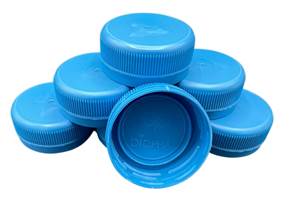Wood on Plastics: Auto Market Ready for Ignition
North American sales and production of motor vehicles suffered a severe decline during the recent recession, and the travails of the auto sector were never far from the public’s collective consciousness.
North American sales and production of motor vehicles suffered a severe decline during the recent recession, and the travails of the auto sector were never far from the public’s collective consciousness. Rumors, news stories, and political speeches were churned out regularly about bankruptcies, bailouts, and cash for clunkers. More recently, the problems associated with a massive recall by global giant Toyota have dominated the news. Despite the steady stream of downbeat headlines, there has been a marked shift in the underlying news and marketing campaigns for the auto industry.
Worries about corporate profits, layoffs, executive salaries, and market share are subsiding; and ideas pertaining to safety, energy consumption, and utility are emerging in their stead. In short, companies that supply transportation and consumers that want to be transported are starting to communicate about cars. This process is still in its early stages, but it is a sure sign of the pending market and economic recovery, and it is everybody’s best hope that the North American manufacturing sector will reclaim its status as a driver of economic growth. It may take some time, but the market will correct its own problems if we let it.
Plastics will play an increasingly important role in this resurgence. And the sum of all the advantages of plastics will make it a clear winner in the contest for most “environmentally friendly.” Let others argue about bag bans and baby bottles, I contend that a significant way to make the world “greener” is to increase the content of plastic parts in our automobiles.
Yet it will likely be old-school factors like lower cost—rather than concerns about global climate change—that will spur demand for more plastics in cars. Despite the severe recession, prices of commodities such as steel and gas remained historically high. These prices will only go higher as global economic activity accelerates in the coming months. Thus, there will be a strong incentive to increase efficiencies in both manufacturing processes for automotive producers and in operating and maintenance costs for consumers.
The downside in this emerging trend is that it will take a while longer for it to really become established, and we are starting at a very low level. Our forecast calls for auto sales to increase during the next few years. The rise will be gradual in 2010, but it will accelerate in 2011 and 2012. This return will be linked to full recovery in the other major economic indicators such as data on employment, housing prices, and consumer confidence. But when the market does return to its former levels, it will be with a product that costs less to manufacture and operate, emits fewer pollutants, and contains a much higher level of plastic parts than ever before.
WHAT IT MEANS TO YOU
Due in large part to the recent debacle with Toyota, consumers will consider safety and reliability to be as important as sustainability in their automotive purchasing decisions. The plastics industry will have to compete very hard if it is to succeed in this area.
- Recycled content, recyclability of used parts, and overall manufacturing and operating costs will continue to rise in importance with consumers. The plastics industry enjoys a strong advantage here.
- America’s so-called love affair with the automobile has matured. Toyota’s rise to the top was the result of offering cars that were practical and reliable, not sleek and sexy. The imminent battle over Toyota’s share of the global market will focus on this area.
About the Author
Bill Wood, an economist specializing in the plastics industry, heads up Mountaintop Economics & Research, Inc. in Greenfield, Mass. Contact BillWood@PlasticsEconomics.com. See his monthly Injection Molding and Extrusion Business Indexes at ptonline.com.
Related Content
What to Look for in High-Speed Automation for Pipette Production
Automation is a must-have for molders of pipettes. Make sure your supplier provides assurances of throughput and output, manpower utilization, floor space consumption and payback period.
Read More3D Printed Spine Implants Made From PEEK Now in Production
Medical device manufacturer Curiteva is producing two families of spinal implants using a proprietary process for 3D printing porous polyether ether ketone (PEEK).
Read MorePHA Compound Molded into “World’s First” Biodegradable Bottle Closures
Beyond Plastic and partners have created a certified biodegradable PHA compound that can be injection molded into 38-mm closures in a sub 6-second cycle from a multicavity hot runner tool.
Read MorePaperless ‘Smart Factory’ Based on Automated Production Monitoring
Tier 1 automotive molder’s home-built production-monitoring and ERP systems, designed for “the little guy,” boost its efficiency rating and profits.
Read MoreRead Next
Making the Circular Economy a Reality
Driven by brand owner demands and new worldwide legislation, the entire supply chain is working toward the shift to circularity, with some evidence the circular economy has already begun.
Read MoreBeyond Prototypes: 8 Ways the Plastics Industry Is Using 3D Printing
Plastics processors are finding applications for 3D printing around the plant and across the supply chain. Here are 8 examples to look for at NPE2024.
Read MoreFor PLASTICS' CEO Seaholm, NPE to Shine Light on Sustainability Successes
With advocacy, communication and sustainability as three main pillars, Seaholm leads a trade association to NPE that ‘is more active today than we have ever been.’
Read More










